Thermal insulation of heating pipes and its types
When installing heat pipes, especially outdoor ones, they are necessarily insulated. This is done to save heat energy of the coolant, as well as to protect the structure from the influence of the environment. Moreover, the quality of heat insulation of heating pipes depends on the cost of heating the room, as well as the durability of the heat pipe, so in this article we will look at the existing options for thermal insulation and their features.
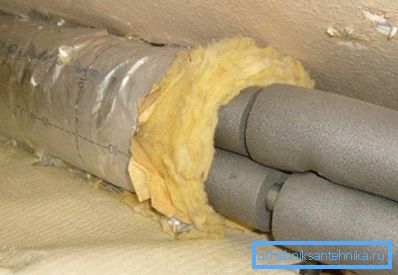
Why need insulation
If the need for insulation of external heating mains is clear, then the need for thermal insulation of internal pipelines is often in doubt. Many people believe that the heat pipe, which supplies the heat carrier to the radiators, also heats the room to some extent, so thermal insulation for heating pipes is not needed.
However, in reality, the efficiency of batteries is much higher than pipes, therefore, the more thermal energy goes to the radiator, the more efficient the heating will be. In addition, in private homes, when there is a negative temperature outside, the water in the system may freeze.
For example, if the pipeline is embedded in the wall, it will not be easy to heat the frozen section. Thermal insulation for pipes for heating eliminates this problem.
Thus, insulation of the heat conductor allows solving the following tasks:
- Reduce heat losses in pipes and thus improve heating efficiency.
- Eliminate the possibility of coolant freezing.
- Protect the pipeline from negative external influences.
From the above, it can be concluded that insulation of pipes for heating is really necessary.
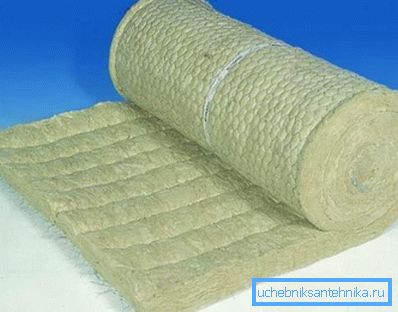
Thermal insulation materials
As a rule, insulation of heating pipes is carried out with the following materials:
- Mineral wool;
- Styrofoam;
- Polyethylene foam;
- Penoizol.
Each insulation for heating pipes has its own advantages and disadvantages. Therefore, below we consider the main features of each of the listed heat insulators.
Mineral wool
Mineral wool is the most traditional thermal insulation of heating pipelines.
Its advantages include the following points:
- Possibility of use with any pipe materials;
- Easy installation;
- High thermal insulation properties;
- Fire resistance;
- Low price;
- Environmental friendliness;
- Good insulation pipes of heating.

Tip! Foil heat insulators, including mineral wool, have been very popular lately. The foil allows you to improve thermal insulation properties, as well as protect the heat insulator from environmental exposure.
Despite these advantages, mineral wool cannot be called an ideal heat insulator, since it has serious disadvantages:
- High hygroscopicity, as a result of which the material not only absorbs water, but also absorbs steam from the air. As a result of wetting, mineral wool ceases to function as a heat insulator.
- For the reasons outlined above, there is a need to perform waterproofing, and also to use a steel galvanized casing on top of the pipes, which complicates installation and also increases the cost of thermal insulation.
Therefore, before making a choice, it makes sense to pay attention to other heat-insulating materials for heating pipes.

Styrofoam
Recently, polystyrene foam, which in common people is called "foam plastic", has become the most common heat insulator. Most often, they are used to seeing it when they warm the facades of buildings. However, it is also successfully used for various types of pipelines, including heating.
Structurally, this insulation of heating pipelines is carried out in the form of a “shell”, which consists of two halves. The connection of the halves is carried out using a thorn-groove connection
Among the advantages of this heat insulator are:
- The simplicity and speed of installation, so that it is not difficult to warm the heating pipes with their own hands.
- Good thermal insulation properties.
- Resistant to moisture.
- Proper installation eliminates the possibility of cold bridges.
- Low cost;
As for the shortcomings, there are not many of them:
- Instability to mechanical stress.
- The maximum temperature in the system should not exceed +80 degrees Celsius.
Therefore, in some cases, the foam is the optimal choice.
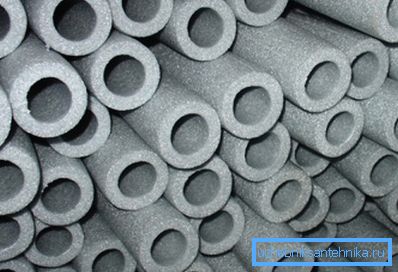
Polyethylene foam
Most often, this heat insulator is used to insulate water pipes, however, it is quite possible to apply it to heating pipes. Structurally, it is performed in the form of soft tubes with one cut side for installation.
Among the advantages of the material are:
- Good thermal insulation properties.
- Among the functions of polyethylene foam is not only thermal insulation, but also sound insulation of heating pipes.
- The ability to withstand frost down to -40 degrees Celsius.
- Extremely simple installation instructions.
- High resistance to chemicals and various aggressive media.
As for the shortcomings, they are also present:
- The maximum temperature of the coolant in the system should not exceed +70 degrees.
- Polyethylene foam easily ignites and supports the combustion process.
For these reasons, this heat insulator is most often used for heat pipes located in trenches.
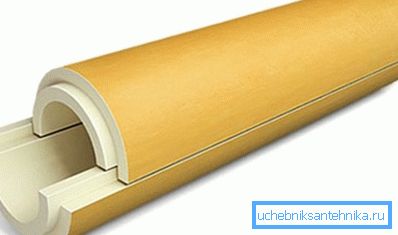
Polyurethane foam
Polyurethane foam insulation is another type of insulation, made in the form of a shell.
He has quite a few positive qualities:
- Mechanical strength is much higher than that of expanded polystyrene.
- Excellent thermal insulation properties.
- Durability.
- An opportunity to apply at temperature of the heat carrier up to 180 degrees, at the same time the lower limit makes-50 degrees.
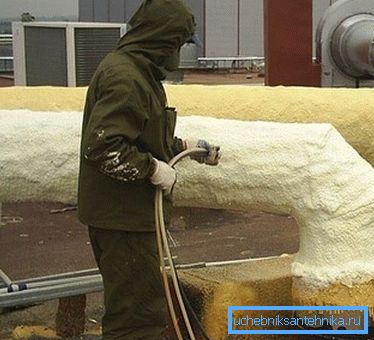
Note! For external pipelines used liquid polyurethane foam, which is applied using a special spray equipment.
Of the disadvantages can be distinguished by a higher cost, compared with the above materials.
Conclusion
We considered only the most common types of heat insulators. All of them have different properties, so before choosing a material, it is necessary to determine the conditions in which the pipeline will work. This will allow the insulation to be performed most effectively (see also the article How to choose pipes for heating correctly: we understand the types of joints and materials).
From the video in this article, you can learn some additional information on this topic.